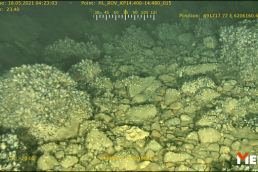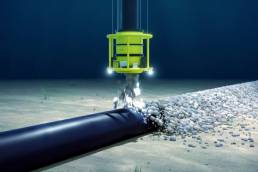FREQUENTLY ASKED QUESTIONS
FAQ
Frequently Asked Questions
Historically, Lithuanian, Latvian and Estonian electricity systems have been operating synchronously with the IPS / UPS system, which still connects the systems of Belarus, Russia and other countries. That makes Baltic States dependent on system-wide frequency management done in Russia, and also susceptible to potential failures in this system. At the same time, despite being a part of the European Union, Baltic States are isolated from its integrated electricity grid by HVDC (high voltage direct current) links.
Energy isolation of the Baltic States in the European Union will only be completely eliminated once the electricity systems have become full participants in the European electricity infrastructure, market and system, i.e., upon the start of synchronous operation in the Continental European Synchronous Area (CESA).
Synchronisation of the Baltic States with the CESA will take place by modification of the existing connection between Lithuania and Poland (LitPol Link).
The new Harmony Link maritime interconnection will unlock the economic potential of synchronising the Baltic electricity systems with the Continental European system. Harmony Link will be the last synchronisation project and the first cross-border project to fully integrate elements of the same synchronous area.
Internal electricity transmission grids of the Baltic States and Poland will also be strengthened, the system will be ready for disconnection from the IPS / UPS system and for independent frequency control, and synchronous condensers will be installed.
The synchronisation project will allow Baltic States to achieve energy independence, therefore it is especially important in terms of national security. But there are other benefits to syncing:
- The infrastructure installed within the scope of the synchronisation project will help to integrate more electricity generation from renewable resources into the Baltic States.
- Synchronisation with the networks of Continental Europe is the only way to separate the three Baltic States from the Astravets nuclear power plant and the energy it produces not only commercially and legally, but also physically.
- Electricity trade with continental Europe, our strategic economic partners, will increase with construction of the new Harmony Link marine connection.
- Complete separation from the IPS / UPS zone is necessary not only for technical reasons. It will also be beneficial in economic terms, as it will create a level playing field for producers and encourage investment in the market. At present, third-country electricity producers using unsafe and polluting equipment have an advantage over Baltic producers investing in renewable energy and striving for sustainable production.
Thus, in addition to becoming full players in Europe’s electricity infrastructure, we will be able to self-manage the frequency of the electricity system through interconnections of electrical system networks, and there will be more opportunities for the development of renewable energy sources and greater participation in the EU’s single electricity market.
The value of the Baltic States synchronisation with Continental European Synchronous Area is about 1.6 billion euros. The project is partially funded by the European Union. More than 1 billion euro funding has already been allocated to Lithuania, Latvia, Estonia and Poland from the EU Connecting Europe Facility (CEF). To date, each implementation project has been funded at the maximum possible intensity of 75%, funding intensity of studies – 50%. The rest of the project is funded by the three Baltic and Polish transmission system operators.
- To create a “gateway to the West”. This includes modification of the existing Lithuanian-Polish LitPol Link interconnection, construction of the new marine Harmony Link interconnection and the construction of the Darbėnai transformer / converter substation. These interconnections will both enable synchronous operation of the Baltic grid in Lithuanian, Latvia, and Estonia with CESA.
- To install a fleet of 9 synchronous condensers (three synchronous condensers each in Lithuania, Latvia and Estonia). To be admitted to CESA, the Baltic States have to meet certain technical requirements of the system. One of those requirements is the grid inertia. To ensure this, synchronous condensers – powerful rotating motors designed to support the grid in event of extreme interruptions – will be installed.
- To implement a system frequency stability assessment system and an automatic generation control system. Both of these critical IT solutions will improve stability of the Baltic grid during the synchronous operation.
- To test the synchronous operation of the Lithuanian and Polish electrical systems in case of unplanned disconnection from the IPS / UPS; to perform tests of the isolated operation of the Lithuanian electricity system and the three Baltic States.
Synchronisation with the Continental European Synchronous Area is the last step towards Baltic States energy independence. Currently, electricity systems of the Lithuania, Latvia and Estonia are still dependent on frequency control in Russia, but already in 2025, it will operate in one synchronous area together with the systems of other European countries.
The synchronisation will take place through the existing link between Lithuania and Poland (LitPol Link), while the new Harmony Link maritime link will help fulfil the economic potential of synchronising the Baltic electricity systems with the Continental European system. Harmony Link will be the last synchronisation project and the first cross-border project to fully integrate elements of the same synchronous area.
With its technical capacity, the submarine cable asynchronously connects Lithuania and Poland, which remains an essential prerequisite for full integration into the European synchronous area without reducing trading capacity in the single European electricity market.
The approximately 330 km total length of 700 MW submarine and onshore high-voltage direct current interconnection Harmony Link will connect the Žarnoviec substation in the Pomeranian region of Poland with the Darbėnai switchyard in the Kretinga district of Lithuania.
Within the scope of this project, approximately 290 km of submarine cables and about 40 km of land cables and converters will be installed on the Lithuanian and Polish sides. Part of the underground cable route will run along the existing engineering infrastructure objects – roads or power transmission overhead lines.
The total investment for the Harmony Link project is around EUR 680 million, of which EUR 493 million will be supported by the Connecting Europe Facility.
About Harmony Link
News
2021-10-08
Litgrid and PSE completed a significant seabed survey
Litgrid along with PSE Polish Power System Operator prepares the largest…
2021-08-18
Litgrid has announced the procurement of a Harmony Link interconnection cable
Implementing the largest synchronisation program project Harmony Link and…



